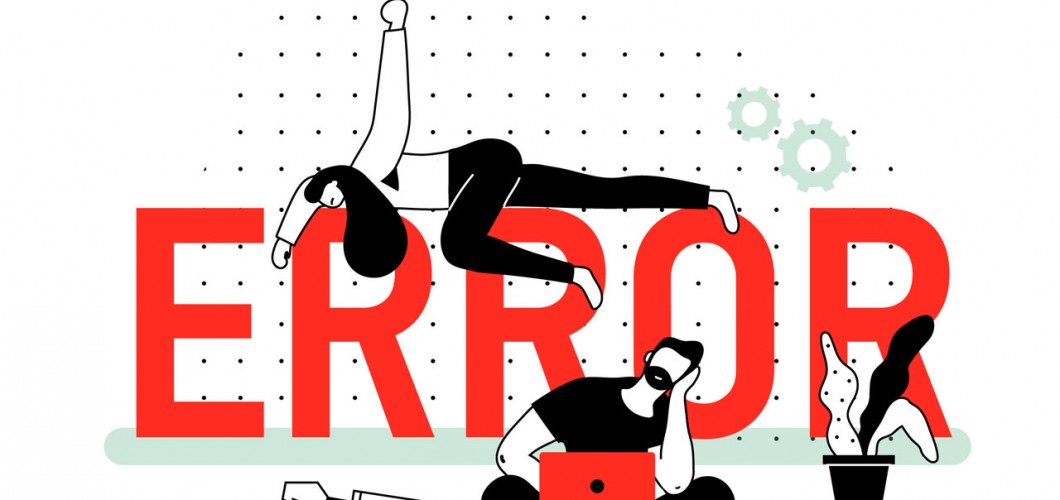
Error Handling in JavaScript (try...catch) and Error Management
JavaScript, despite being a dynamic and powerful language, inevitably encounters errors during program execution. These errors often stem from unexpected situations, incorrect user inputs, network connection issues, or API responses. Proper error management in JavaScript plays a crucial role in ensuring the smooth and secure operation of applications. In this article, we will provide a detailed overview of error handling in JavaScript, focusing on the try...catch block, and offer examples to illustrate these concepts.
1. What is Error Handling?
Error handling refers to the process of controlling and addressing errors that occur during program execution. Errors, when left unhandled, can cause the program to crash. However, when proper error management is in place, errors do not prevent the application from functioning smoothly. The try...catch block is the most commonly used structure for error handling in JavaScript.
2. The try...catch Block
The try...catch structure allows you to execute a block of code and capture any errors that may occur during execution. The basic syntax looks like this:
try {
// Code that may cause an error
} catch (error) {
// This block will run if an error occurs
}
2.1. The try Block
The try block contains the code that could potentially throw an error. If an error occurs during the execution of this code, the JavaScript engine sends the error to a catch block.
2.2. The catch Block
The catch block is executed if an error occurs in the try block. The error information is passed as a parameter to the catch block, usually named error. This parameter contains details about the error.
2.3. The Error Object
The error object contains information about the error, such as the type, message, and location of the error. Here's an example of how you can use the error object:
try {
let result = riskyFunction();
} catch (error) {
console.log('Error Message:', error.message);
console.log('Error Name:', error.name);
console.log('Error Location:', error.stack);
}
In this example, error.message provides the error message, error.name gives the error type, and error.stack shows the stack trace where the error occurred.
3. The finally Block
The finally block contains code that will execute regardless of whether an error occurred or not. It is typically used for operations like releasing resources or closing connections.
try {
// Code that may cause an error
} catch (error) {
// Error handling code
} finally {
// This block will always execute
console.log('This message is always printed');
}
4. Error Types
JavaScript errors can be of several different types. The most common error types include:
- SyntaxError: Errors in the syntax of JavaScript code.
- ReferenceError: Triggered when trying to access an undefined variable or function.
- TypeError: Occurs when an operation is performed on an incompatible data type.
- RangeError: Happens when a value is outside of an acceptable range.
- URIError: Occurs when there is an error in URL encoding/decoding.
- EvalError: Triggered when there is an error with the
eval()function.
5. Error Management Strategies
Error management is not just about catching errors, but also about handling them appropriately, providing meaningful feedback to users, and ensuring the system continues to function properly.
5.1. User-Friendly Error Messages
When developing an application, it's important to display user-friendly error messages that users can understand. Technical error messages typically do not help users, so it's best to use simple and meaningful explanations.
try {
let userData = getUserData();
console.log(userData);
} catch (error) {
alert('An error occurred while retrieving data. Please try again.');
}
5.2. Logging Errors
In a production environment, it is useful to implement an error logging system that allows you to track and analyze errors that occur. This helps provide more information about the source of the error.
try {
riskyFunction();
} catch (error) {
console.error('Error: ', error);
// Log the error to a file or server
}
5.3. Isolating Error Messages
It's a good practice to isolate error messages from the user. The user should only be notified about critical errors that impact the functioning of the application. For example, in the case of a network error, only a connection issue should be reported, and technical details should be hidden.
try {
fetchDataFromServer();
} catch (error) {
if (error instanceof TypeError) {
alert('There was an issue with the data format.');
} else {
alert('An error occurred, please try again.');
}
}
6. Advanced Error Management Techniques
6.1. Asynchronous Errors and try...catch
When working with async/await, error handling becomes even more useful. The try...catch block can be used to handle errors within asynchronous functions.
async function fetchData() {
try {
let response = await fetch('https://api.example.com/data');
let data = await response.json();
console.log(data);
} catch (error) {
console.error('Error fetching data:', error);
}
}
6.2. Error Handling in Promises
When working with Promises, the catch method is used to handle errors.
fetch('https://api.example.com/data')
.then(response => response.json())
.then(data => console.log(data))
.catch(error => console.error('API error:', error));
6.3. Throwing Custom Errors (throw)
Sometimes you need to throw your own error messages based on certain conditions, especially for validation errors. This can be done using the throw statement.
function validateInput(input) {
if (!input) {
throw new Error('Input cannot be empty');
}
console.log('Valid input');
}
try {
validateInput('');
} catch (error) {
console.error('Error:', error.message);
}
7. Conclusion
Error handling in JavaScript is critical for ensuring that applications run smoothly and without unexpected crashes. The try...catch block is a powerful tool for managing errors. Effective error management involves not only catching errors but also handling them in a way that improves the user experience, provides meaningful feedback, and keeps the application running without interruption. In this article, we’ve covered everything from basic error handling to more advanced techniques. Best practices in error management are an integral part of software development, and understanding and addressing errors will improve the overall quality of your code.

Leave a Comment